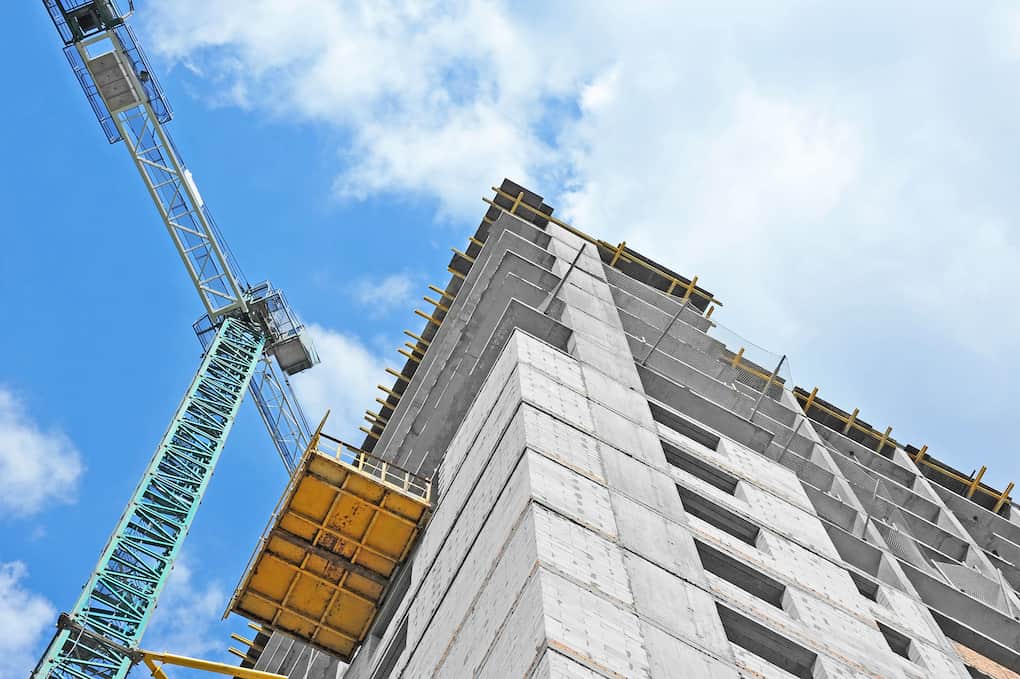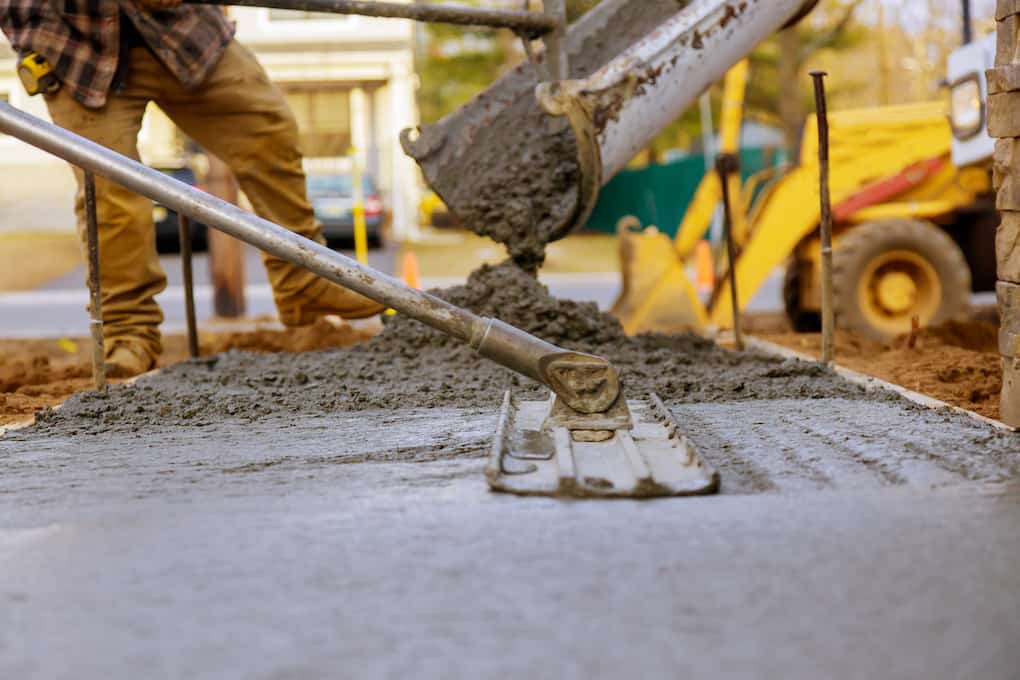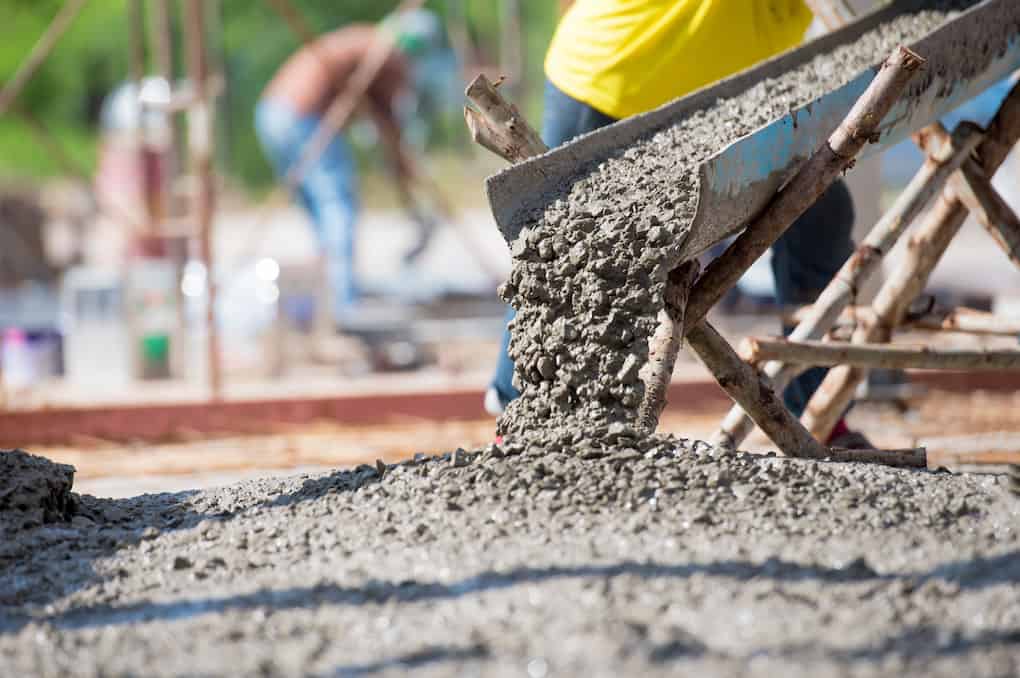Wondering what the benefits are of using concrete for construction projects?
As concrete contractors, we stand behind the advantages of using concrete throughout construction projects. But, that’s not just because we live and work in the industry.
It’s because concrete and cement are superior to most other building products and its benefits are unmatched. But don’t take our word for it; see for yourself.
Today we’ll be giving you 8 clear benefits of using concrete throughout construction.
What is Concrete Used for In Construction?
Concrete is one of the few building products used throughout construction to serve a multitude of purposes. From forming the skeleton of a building to being used as flooring, concrete is found everywhere on job sites.
Some specific uses for concrete in construction include:
- Pavement
- Architectural Structures
- Roadways
- Foundations
- Bridges
- Parking Structures
- Walls and Footings
- Fences and Poles
- Pillars and Supports
Because cement is such a strong and long-lasting product, you’ll find it particularly often throughout commercial building projects.

What is Concrete Made From?
Cement is a term often used interchangeably with concrete, but that’s not exactly correct. Cement is simply an ingredient within the larger mixture we know as concrete.
Concrete is made from a mixture of aggregate materials, including sand, gravel or crushed rock, and cement. The ratio between the different ingredients will help determine how strong it will be and what its final texture will look like after being completed. Finer mixtures won’t be as strong as more coarse mixtures, but they will be more smooth and easy to finish.
Companies like Goodmanson mix their own concrete, depending on what it will be used for. If you’re ever looking to do a DIY project, you might find different types of concrete in your local hardware store. These bags are premixed for different uses, and all you have to do is add water.

Benefits of Using Concrete for Construction
Here are some of the benefits and advantages of using concrete throughout construction. Some of these benefits will impact the planet, while others will directly impact your construction project. Here’s what you need to know:
Concrete is Highly Cost-Effective
When it comes to raw materials, concrete is one of the most affordable options on the market. Not only does this help keep your construction budget in check, but it also means that you’re using an earth-friendly product. Less energy use and easier procurement mean that you’ll be saving money on a durable and long-lasting building material.
Concrete can Dry in Ambient Temperatures
This is a huge benefit to construction sites where weather can be unpredictable. With concrete, you don’t have to worry about humidity, low, or high temperatures dramatically delaying the time it takes the concrete to dry. In most climates, you can complete a pour and leave it to dry in just a couple of days.
Concrete can Easily Be Cast Into Shapes
Forming concrete into different shapes is one of the oldest tricks in the trade. With modern tools, it’s easier than ever to get creative with the shapes you can create. This also means that you’re not limited to using pre-made concrete molds, which can save time and money on your project. The advantages of casting shapes are endless.

Lower Need for Energy During Production
The manufacturing of cement requires a low amount of energy. Steel and wood production can consume large amounts of energy over long periods of time, while concrete is easy to manufacture and saves on energy costs from start to finish. This is one of the main reasons it’s so popular.
Extremely Water Resistant
Unlike other building materials, concrete doesn’t easily absorb moisture, leading to mold and mildew growth. After the concrete dries, it will rarely absorb any amount of water and thus provide you with an almost impermeable, water-tight barrier. Water-resistance makes it a prime candidate for use as a foundation material.
Resistant to High Temperatures
Concrete has a very high melting point and doesn’t easily ignite. This makes it ideal for use in areas where fires are common, or high temperatures are present. Concrete is also used to create fire pits and grills, making it a popular choice on patios and backyards. Most other building and construction materials will have adverse reactions to high temps.
A Place for Recycled Waste to Be Reused
As mentioned before, concrete is made of a mixture of aggregate materials. This means that there are plenty of opportunities for recycled wastes to be put to good use. It’s not uncommon for old tires, broken glass, metal shavings, and other materials to find their way into the concrete mix. This makes great use of products that would have otherwise been rotting for years to come and helps keep recycled build materials moving and being used.
Low to Zero Maintenance Required
Once a concrete structure is complete, it requires very little maintenance. Unlike other building materials, which may require painting or staining every few years, concrete is resistant to mold, mildew, and most other forms of degradation. It is also fire-resistant, saving on maintenance costs after a structure is completed. In some cases, maintenance may be required in the first few years to ensure that your concrete product is properly protected from weathering.
Types of Concrete for Construction
As mentioned earlier, a few different types of concrete mixes help determine what the concrete should be used for. While there are plenty of different names and ways that concrete has been used, we’re going to cover three of the overarching categories below.
- Traditional Concrete
- Lightweight Concrete
- High-Density Concrete
Concrete technology is ever-evolving and becoming more advanced all of the time. This leads to better products and more uses, but still a similar final product.

Traditional Concrete
Arguably the most used concrete mix is the simple and long-lasting original or traditional concrete. The primary ingredients include cement, sand and coarse aggregates, and a pre-specified quantity of water.
A commonly known ratio is 1 part cement, 2 parts aggregates, and 4 parts water.
This plain concrete is used primarily for pavements and buildings where high strength isn’t required. It can also be used in the construction of smaller dams.
Lightweight Concrete
If a type of concrete has a density of less than 1920 Kg/m3, it is classed as lightweight concrete. To achieve this lower weight, various materials like pumice and scoria, as well as shales and clays, are used as aggregates.
The advantage of lightweight concrete is the low thermal conductivity, making it better for insulation. The K value used to measure thermal conductivity in plain concrete can be up to 12, while lightweight concrete is only .3.
Depending on the composition of lightweight concrete, it can be used for thermal insulation, protecting steel structures, long-span bridge decks, and building blocks.
High-Density Concrete
A high-density concrete mix has a density of over 3000 Kg/m3 and is used for heavyweight purposes. High-density rocks are crushed as coarse aggregates to create this type of concrete. One of the most common materials is barytes, a very heavy aggregate.
High-density concrete isn’t needed nearly as often as lower densities. But, they are most commonly used in atomic power plants and other similar structures because of their protection against radiation.

Getting Your Concrete Construction Started Off Right
If you need concrete work done for your construction project, ourGoodmanson Construction team would be happy to provide you with a competitive estimate. We’ve been working in this industry for more than 50 years and provide our customers with top-notch service every time!
Reach out to our team today to get started!

